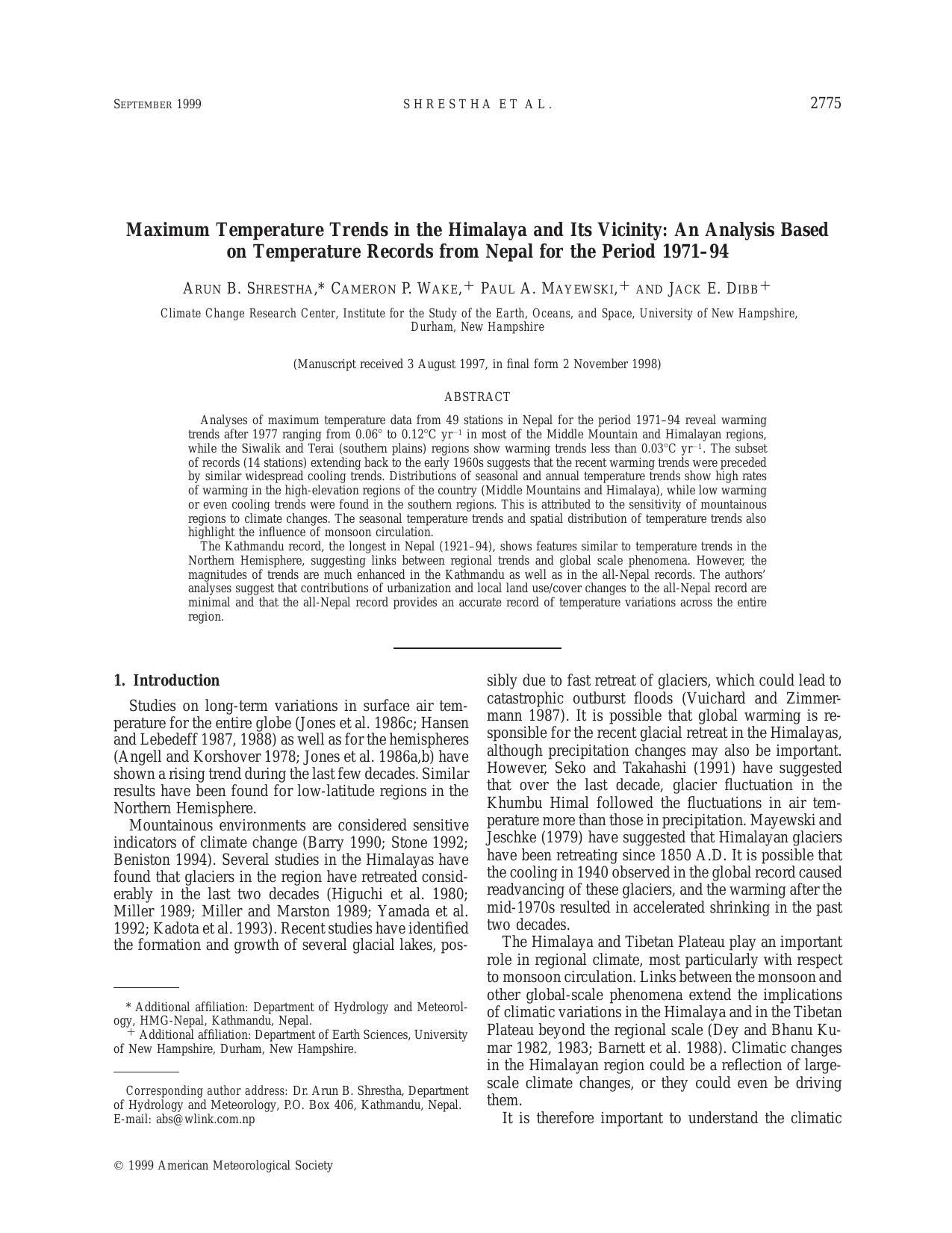Analyses of maximum temperature data from 49 stations in Nepal for the period 1971–94 reveal warming trends after 1977 ranging from 0.06° to 0.12°C yr−1 in most of the Middle Mountain and Himalayan regions, while the Siwalik and Terai (southern plains) regions show warming trends less than 0.03°C yr−1. The subset of records (14 stations) extending back to the early 1960s suggests that the recent warming trends were preceded by similar widespread cooling trends. Distributions of seasonal and annual temperature trends show high rates of warming in the high-elevation regions of the country (Middle Mountains and Himalaya), while low warming or even cooling trends were found in the southern regions. This is attributed to the sensitivity of mountainous regions to climate changes. The seasonal temperature trends and spatial distribution of temperature trends also highlight the influence of monsoon circulation. The Kathmandu record, the longest in Nepal (1921–94), shows features similar to temperature trends in the Northern Hemisphere, suggesting links between regional trends and global scale phenomena. However, the magnitudes of trends are much enhanced in the Kathmandu as well as in the all-Nepal records. The authors’ analyses suggest that contributions of urbanization and local land use/cover changes to the all-Nepal record are minimal and that the all-Nepal record provides an accurate record of temperature variations across the entire region.
